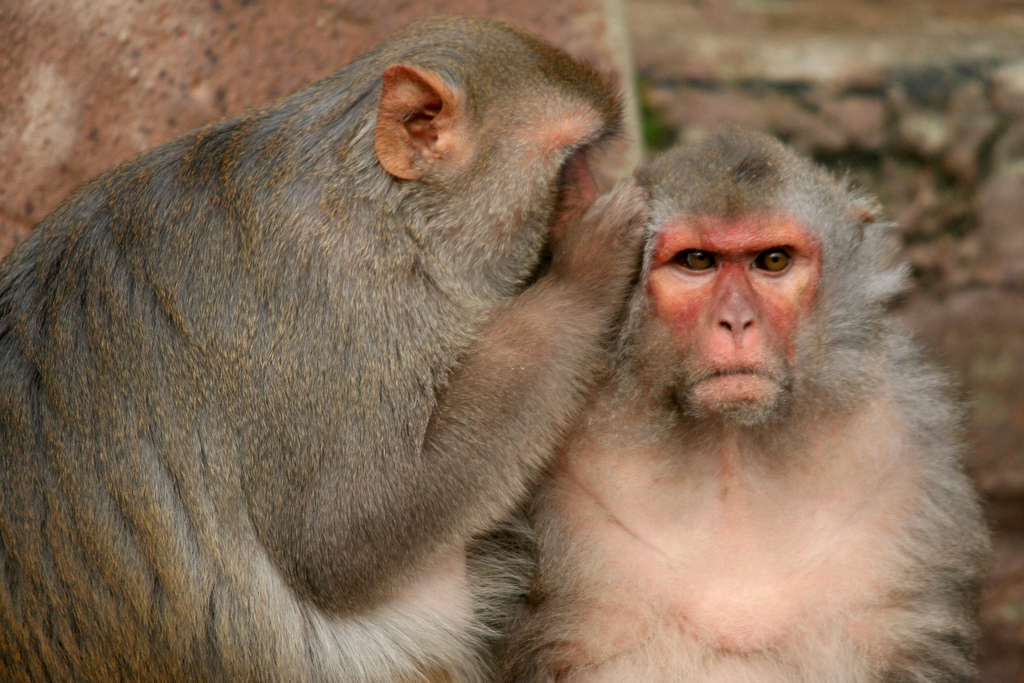 Health & Physiology
Health & Physiology
Lower calorie intake allows monkeys to live long and prosper

The recent report in Nature Communications settles a persistent controversy in biology of aging research; namely, whether or not caloric restriction (CR), reduced calorie intake without malnutrition, confers health and longevity benefits in nonhuman primates. The University of Wisconsin-Madison and the National Institute on Aging (NIA) at NIH study teams came together to analyze data from the two parallel studies that up until now had reported contrasting outcomes of CR. In 2009, the UW-Madison study team reported significant benefits in survival and reductions in cancer, cardiovascular disease, and insulin resistance for monkeys who ate less than their peers. In 2012, however, the NIA study team reported no significant improvement in survival, but did find a trend toward improved health. Working together, the competing laboratories analyzed data gathered over many years from almost 200 monkeys from both studies. The authors concluded that lower calorie intake in adulthood and later in life confers benefits in terms of both health and survival in primates. A major outcome of these analyses was the beneficial effects of CR on health and disease incidence that was detected for both studies. One of the caveats specific to primate species was that starting on the diet too early in life may not be beneficial for longevity, unlike rodents where the earlier the animals go on the diet the longer the resulting lifespan.
The CR paradigm was first reported in the 1930s. Since then its effects in increasing longevity and delaying the onset of cancer, cardiovascular disease, neurodegeneration, and diabetes have been firmly established. In the last two decades there has been a large body of work focused on how this simple dietary intervention can change a process as complicated as aging. Much of the mechanistic work has been conducted in short-lived species such as worms, flies, and rodents, but the significance for human beings of those insights relies on a demonstration that the CR paradigm is relevant in primates. The published work puts that concern to rest. At a more basic level the study shows that the rate of aging can be changed in nonhuman primates indicating that it might also be changeable in humans. DNA in humans and rhesus monkeys is 93% identical and there are profound similarities between humans and rhesus monkeys in the rate of aging, the types of diseases of aging that occur, and how they manifest clinically. This makes it extremely likely that the mechanisms engaged by CR to delay aging in monkeys will be translatable to human health and human aging. The last thing to add is that this study makes a strong case for aging itself as a target for pharmacological intervention: if the negative outcomes of aging could be delayed by taking a pill, that would potentially off-set a whole host of aging associated diseases and disorders simultaneously. This strategy contrasts with classic studies that look for ways to target and treat each age associated disease and disorder one at a time.
As for the take-home message, things have never looked better in aging research. Using CR as a model of delayed aging it is only a matter of time before cellular and molecular aspects of aging that create disease vulnerability are uncovered. These insights will enable researchers to identify effective ways to off-set those changes to improve and extend healthy aging. The anti-aging pill may be closer than we think.
Original Article:
Mattison J, Colman R, Beasley T, Allison D, Kemnitz J, Roth G, Ingram D, Weindruch R, de Cabo R, Anderson R. Caloric restriction improves health and survival of rhesus monkeys. Nature Communications. 2017;8:14063. doi:10.1038/ncomms14063.Next read: Gut bacteria drive yo-yo dieting by Eran Elinav
Edited by:
Massimo Caine , Founder and Director
We thought you might like
A new paradigm for metabolic health: reduced intake of dietary branched-chain amino acids
Feb 22, 2018 in Health & Physiology | 3 min read by Dudley W. LammingThe surprising effects of a Paleo diet on diabetic patients
Dec 14, 2016 in Health & Physiology | 3 min read by Alice MatoneHowler monkeys: living a life in colour helps finding better food
Jul 3, 2017 in Evolution & Behaviour | 4 min read by Amanda D. MelinEnvironmental sustainability of nationally recommended diets
Jun 14, 2018 in Health & Physiology | 3 min read by Paul BehrensMore from Health & Physiology
Tobacco smoking and other exposures shut off cancer-fighting genes
Aug 31, 2024 in Health & Physiology | 3 min read by Jüri Reimand , Nina AdlerA hidden clock that times cytoplasmic divisions
Aug 30, 2024 in Health & Physiology | 3 min read by Cindy OwWhen two kinases go for a dance
Aug 2, 2024 in Health & Physiology | 4 min read by Ioannis Galdadas , Francesco Luigi Gervasio , Pauline JuyouxAwakening the thymus to cure SARS-CoV-2 infection: a matter of genes
Jul 27, 2024 in Health & Physiology | 3.5 min read by Stefano Marullo , Cheynier RemiKeeping the balance: How epigenetics monitors cancer genes
May 13, 2024 in Health & Physiology | 4 min read by Zach Gray , Madison Honer , Johnathan WhetstineEditor's picks
Trending now
Popular topics


